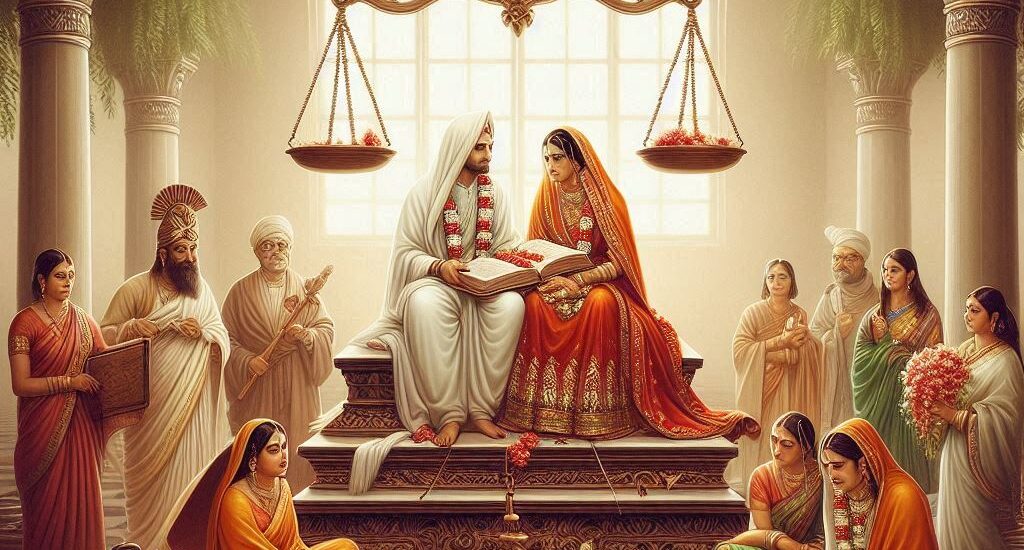



Irretrievable Breakdown of Marriage: An Unofficial Reality In The Hindu Marriage Act. Indian society, particularly under Hindu law, has traditionally revered the sanctity of marriage. However, the concept of divorce has evolved alongside societal changes. The Hindu Marriage Act (HMA), 1955, while providing grounds for divorce, doesn’t explicitly recognize the “irretrievable breakdown of marriage” as a standalone reason for dissolution. This concept, however, has emerged as a significant factor in judicial pronouncements by the Supreme Court, creating a nuanced legal landscape.
The HMA currently relies on a fault-based system, outlined in Section 13, which allows for divorce on grounds of specific transgressions by one spouse. These grounds include:
While these grounds provide a framework for divorce, they can be limiting. Marriages may simply break down irretrievably due to incompatibility, lack of emotional connection, or other factors that don’t necessarily fall under the categorized transgressions. This can lead to a situation where a couple is trapped in a loveless and dysfunctional marriage, unable to seek legal separation due to the limitations of the HMA.
Recognizing this gap, the Law Commission of India, in its 1978 report, recommended incorporating an irretrievable breakdown of marriage as a ground for divorce. This would move away from the fault-based system and acknowledge that marriages can dissolve without assigning blame. The rationale behind this approach includes:-
Providing Relief: Couples in genuinely broken marriages, with no hope of reconciliation, would have a clear path towards legal separation. This can alleviate the mental and emotional strain of a prolonged, unhappy marriage.
Focus on Reality: Marriages can deteriorate due to various factors beyond the categorized transgressions listed in the HMA. Irretrievable breakdown acknowledges this reality and offers a more holistic approach to divorce proceedings.
Reducing Collusion: In the current system, parties may resort to fabricating grounds under existing categories like cruelty, leading to bitterness and manipulation. An irretrievable breakdown could potentially reduce such practices.
The Supreme Court, through various landmark judgments, has hinted at the possibility of granting divorce based on the irretrievable breakdown, even though the HMA doesn’t explicitly mention it. Some key examples include:
Vishnu Dutt Sharma v. Shanti Devi (1975): The court observed that a “continuously strained relationship” could be a ground for divorce under cruelty. This opened the door for broader interpretations of cruelty beyond physical harm.
Yudhvir Singh v. Jasbir Kaur (1982): The court emphasized that a “breakdown of irretrievable nature” could be considered under the concept of cruelty.
Jasbir Kaur v. Manjit Singh (2006): The court recognized that living separately for a long period could be a strong indicator of irretrievable breakdown.
These judgments demonstrate the court’s growing recognition of irretrievable breakdown as a significant factor in divorce proceedings. Notably, the court doesn’t disregard the existing grounds entirely. Instead, it interprets them with a more nuanced understanding of marital breakdown.
Despite these developments, the HMA hasn’t been amended to formally include irretrievable breakdowns as a ground for divorce. This creates a situation where:
The lack of a formal amendment for irretrievable breakdown has led to calls for reform. Proponents argue that formally including irretrievable breakdown would provide Clarity and Consistency as clearer guidelines would lead to more predictable outcomes in court cases, reducing uncertainty for couples seeking divorce. The current system can lead to lengthy and acrimonious proceedings as parties focus on proving specific faults. An irretrievable breakdown could potentially expedite the process by focusing on the state of the marriage itself. A formal amendment could pave the way for a more progressive approach to divorce, where blame is not a central factor.
On the other hand opponents of amending the HMA raise concerns about the sanctity of marriage as they argue that a no-fault system could trivialize marriage and make divorce too easy to obtain. There’s also a possibility that one spouse could misuse the provision to unilaterally force a divorce. The other concerns exist that a no-fault system might lead to increased instability in marriages, particularly impacting traditional values in Indian society.
The concept of irretrievable breakdown of marriage occupies a complex space within the Hindu Marriage Act. While not a formally recognized ground for divorce, it plays a significant role in judicial interpretations. The ongoing debate highlights the need for a balanced approach that acknowledges the realities of marital breakdown while considering potential social implications.
Here are some potential future scenarios:
The path forward will likely involve ongoing discussions and a careful consideration of social, legal, and ethical aspects. Regardless of the specific outcome, the concept of irretrievable breakdown is likely to remain a crucial factor in shaping the future of divorce proceedings under the Hindu Marriage Act.